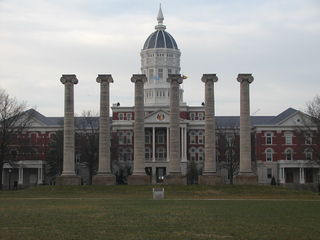Bias
The Hidden Message of the University of Missouri Scandal
An important factor in the University of Missouri scandal has been overlooked.
Posted January 19, 2016

Following a series of racist incidents at the University of Missouri’s Columbia campus, and student protests in response--including a hunger strike by a graduate student and a threatened strike by the football team--the University President, Timothy Wolfe, resigned, and the Chancellor of the University, R. Bowen Loftin, “said he would step down to a less prominent role at the end of the year.” (Unless otherwise indicated, the quotations in this piece are from this link to a New York Times story. Loftin did, indeed step down.)
The situation at the university is a complex one, involving both recent and earlier events on the campus, and influential external events—especially the police shooting of Michael Brown in Ferguson, Missouri, and the Black Lives Matter Movement. My intention here is not to review the entire situation—the above link can aid interested readers—but to point out an important element that has been left out or glossed over in the discussion—the change over the last several decades in the mission of institutions of higher education.
In my essay A University Is Not Walmart, I pointed out that American universities have adopted the business model, and that “once universities adopt the business model, their primary mission changes from furthering knowledge and providing education to making money.”
Let us focus attention on a key element. The University President, Timothy Wolfe, “was hired in 2012 from the corporate world, an outsider brought in to cut costs in the four-campus system.” In other words, he was not an academician, and his focus was not on educational standards, but on the bottom line.
The event that triggered the President’s resignation was the threat of a strike by the football team if he did not resign; and “officials said that just forfeiting the team’s game Saturday against Brigham Young University in Kansas City, Mo., would cost the university $1 million.”
In other words, as I see it, Wolfe was hired to save money, so once his presence was going to actually cost a lot of money, he had to go. (One might also note the central role of football—as opposed to academics—in the university business. In recent years, philosophy and anthropology—to name just two disciplines--have come under attack as money-losers that don’t lead to jobs. So, as a thought experiment about priorities, if you could choose only one, which would make better business sense for the University of Missouri—drop money-making sports or drop money-losing departments? And which would make better educational sense?)
The University of Missouri made a number of changes in response to student demands, “including hiring a diversity, inclusion and equity officer for the entire University of Missouri system...[providing] additional support to [those experiencing] discrimination...and improving diversity and inclusion [and requiring related] training...”
One hopes that these changes will improve the social climate and foster learning on campus; but we may ask whether these academic goals were the primary motivation for the changes. Or were the changes seen as necessary expenses to protect the bottom line?
Image Source:
Wikimedia Commons
Mizzou-columns-JayBuffington.jpg
https://commons.wikimedia.org/wiki/File:Mizzou-columns-JayBuffington.jpg
Iconic columns of the University of Missouri in Columbia
When the original administration building of the university burned in 1892 the columns were left standing. They stand today on Francis Quadrangle and are an iconic image of the university's Columbia campus.
Check out my most recent book, The Myth of Race, which debunks common misconceptions, as well as my other books at http://amazon.com/Jefferson-M.-Fish/e/B001H6NFUI
The Myth of Race is available on Amazon http://amzn.to/10ykaRU and Barnes & Noble http://bit.ly/XPbB6E
Friend/Like me on Facebook: http://www.facebook.com/JeffersonFishAuthor
Follow me on Twitter: www.twitter.com/@jeffersonfish
Visit my website: www.jeffersonfish.com


